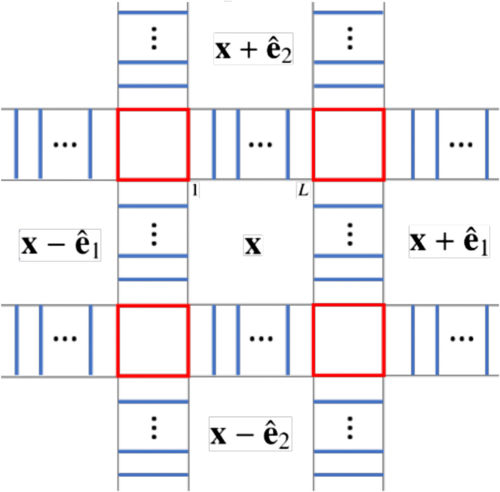Quantum simulation, a method for studying nonperturbative gauge theory physics, faces challenges such as the need to simulate infinitely dimensional local Hilbert spaces. This method, which maps lattice gauge theories onto quantum devices, has shown promise but is limited by issues like the use of Euclidean spacetime and the sign problem.
To overcome these challenges, researchers propose using coarse graining of simple low-dimensional qubit systems to obtain arbitrarily large local Hilbert spaces. This approach could potentially lead to a better understanding of nonperturbative gauge theory physics and the fundamental interactions of nature.
What is Quantum Simulation and its Challenges?
Quantum simulation is a method proposed in recent years for studying nonperturbative gauge theory physics. This method involves mapping lattice gauge theories onto quantum devices, which can be built in laboratories or quantum computers. While this method has shown promising results, it still faces several challenges. One of these challenges is the need to simulate infinitely dimensional local Hilbert spaces that describe the gauge fields on the links in the case of compact Lie gauge groups. This requires some truncations and approximations, which are not completely understood or controllable in the general case.
Quantum simulation of lattice gauge theories (LGTs) is a rapidly growing field of research. It offers quantum technology and computation-based methods for dealing with challenging nonperturbative open questions in gauge theories. These models describe the most fundamental interactions of nature, such as those in the standard model of particle physics. However, when real-time dynamics and finitely dense fermions are considered, this method becomes problematic. This is due to the use of Euclidean spacetime, which makes real-time dynamics not directly feasible and the sign problem arises for several finite density scenarios.
While a lot of theoretical work has been done in terms of mapping relativistic theories with local symmetries to the nonrelativistic globally invariant available simulating platforms, much work is yet to be done. The experiments carried out so far, while showing remarkable results, are mostly limited to small systems and low dimensions. One particular challenge has to do with the fact that the local gauge field Hilbert spaces of LGTs with compact Lie gauge groups are of infinite dimensions and available quantum hardware for quantum simulation and computation tasks usually involve finitely dimensional spaces.
How Can Quantum Simulation Overcome its Challenges?
To overcome the challenges faced by quantum simulation, this work proposes a way to obtain arbitrarily large local Hilbert spaces by using coarse graining of simple low-dimensional qubit systems made of components available on most quantum simulation platforms. This opens the way to new types of lattice gauge theory quantum simulations.
It is well-known that invariance under the full gauge group does not require the use of the full nontruncated Hilbert space. In order to obtain nontruncated Hilbert space physics with such models as that of the continuum gauge theories, one needs to introduce an extra dimension. Another option for obtaining the full Hilbert space limit is including more and more representations and raising the truncation cutoff. Then no extra dimension is needed, but one does have to experimentally implement larger Hilbert spaces.
This problem, however, is not new or unique to the world of quantum simulation and the Hamiltonian formulation. Similar issues were met by classical calculations when dealing with errors and their scaling with the lattice spacing, leading to the development of the improved Symanzik actions. These ideas have led to the recent development of improved lattice Hamiltonians aimed at dealing with the truncation problem in lattice gauge theory quantum simulations.
What is the Proposed Solution to the Quantum Simulation Challenges?
In this work, the authors suggest another way to obtain the full Hilbert space from a truncated lattice model or at least to increase the truncation. For that, they use the fact that several lattice models may give rise to the same continuum limit. Thus, they introduce a model where the local Hilbert spaces are finite and very small two-level systems (spin 1/2, or qubits) as desired for many quantum simulation implementations, but the interactions and couplings are tailored in a proper way.
This approach is similar to considering real-space renormalization, coarse-graining, or blocking of local degrees of freedom residing on smaller local Hilbert spaces. In the classical approach of actions and path integrals, such ideas have been introduced and studied in the past. This includes works on perfect actions and fixed-point actions, Migdal-Kadanoff and real-space renormalization group, tensor renormalization group, and more.
By using this approach, the authors aim to overcome the challenges faced by quantum simulation and open the way to new types of lattice gauge theory quantum simulations. This could potentially lead to a better understanding of nonperturbative gauge theory physics and the fundamental interactions of nature.
Publication details: “Real-space blocking of qubit variables on parallel lattice gauge theory links for quantum simulation”
Publication Date: 2024-03-27
Authors: Judy Shir and Erez Zohar
Source: Physical review. D.
DOI: https://doi.org/10.1103/physrevd.109.054512

